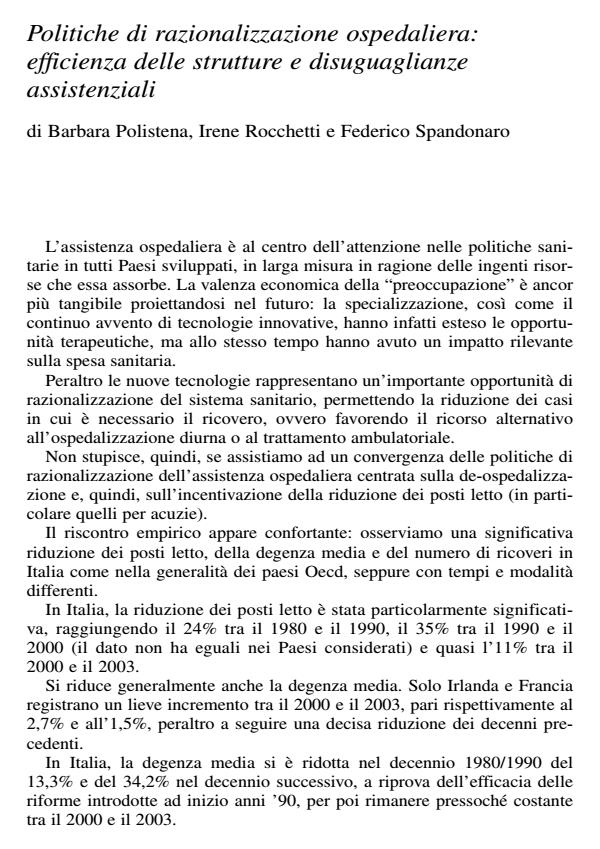Politiche di razionalizzazione ospedaliera: efficienza delle strutture e disuguaglianze assistenziali
Journal title SALUTE E SOCIETÀ
Author/s Barbara Polistena, Irene Rocchetti, Federico Spandonaro
Publishing Year 2007 Issue 2007/3 Language Italian
Pages 25 P. 31-55 File size 389 KB
DOI
DOI is like a bar code for intellectual property: to have more infomation
click here
Below, you can see the article first page
If you want to buy this article in PDF format, you can do it, following the instructions to buy download credits

FrancoAngeli is member of Publishers International Linking Association, Inc (PILA), a not-for-profit association which run the CrossRef service enabling links to and from online scholarly content.
Hospital care is the largest part of health care expenditures. Thinking about the future it seems that this kind of costs will increase: the multiplication and specialisation of functions, together with the growth in new technologies, have a big effect on health expenditures. Yet, new technologies represent also a factor of innovation in the health care system: in many cases they have supported the possibility of day hospital and ambulatorial care. Not surprisingly there is a strong emphasis on de-hospitalisation; hospital beds reduction and home care. The authors describe pro and cons of this trend.
Barbara Polistena, Irene Rocchetti, Federico Spandonaro, Politiche di razionalizzazione ospedaliera: efficienza delle strutture e disuguaglianze assistenziali in "SALUTE E SOCIETÀ" 3/2007, pp 31-55, DOI: